Are You Trying to Shake Down a National Treasure?
October 3, 2024 at 10:41 a.m.
With this post, Northwest Prime Time has featured Carol Burnett three times. Can you tell that I'm a fan?
The first was a cover story back in 2018. Then, last year, we provided an update when she celebrated her 90th birthday by being honored with a two-hour television special.
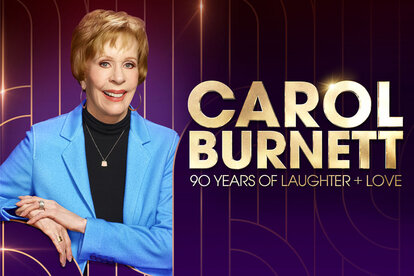
And now here we are again.
The impetus for this latest post came when Carol Burnett made history earlier this year by setting a new record as the oldest woman to be nominated for an acting Emmy. While she didn't win for her role as Norma Dellacorte in the Apple TV+ series, Palm Royale, she has received 23 Emmy nominations and has won seven times.
The news of her latest accomplishment had me reflecting back to the time in 2018 when I actually had the chance to interview Carol Burnett. I am such a big fan and couldn't believe that I would have the chance to talk with her.
Yes, it was a thrill of a lifetime. But the road to that talk was not without a few bumps in the road.
The opportunity to interview her arose because she was coming to town with her one-woman show, An Evening of Laughter and Reflection Where the Audience Asks the Questions.
In the interview, she was just as charming and generous, self-deprecating and funny as you’d want her to be.
But I was extra nervous during that 2018 interview, and not only because Carol Burnett is such a big star.
The reason? I had to first go through one of her "handlers"... I'm not sure if it was her manager or publicist or what his role was in her life. But he had just accused me of trying to shake down Carol Burnett.
It all started shortly before we entered our hectic deadline for the October 2018 edition. I had just completed the cover story, which is always a big relief. Cover stories usually take some blood, sweat, and tears out of me, and it was great having it behind me. But there was still a lot of work ahead during the grueling production deadline.
That's when I received the call. Would I like to interview Carol Burnett? The man said they planned to place a 1/2-page ad in Northwest Prime Time, along with the offer of an interview.
I was floored that I would have the chance to interview Carol Burnett! Wow!
And wow about that 1/2-page ad. We never want to turn down extra revenue. Although it would mean adding another four pages (which also adds a lot more to the printing bill) plus redoing the layout, it was worth it. The money from the ad barely covered the extra costs, but extra pages meant I could squeeze in some extra articles I had been hoping to place. Plus, there was that offer to interview Carol Burnett!
We made the arrangements.
Several days later, after the grueling grind of laying out the vast majority of the paper, it was time to collect the big 1/2-page ad for Carol Burnett's upcoming Seattle show, and to get ready for the big interview.
That's when the man who had placed the order for the ad casually mentioned that they had reallocated the funding to a different media outlet and so would not be placing an ad. But he was happy to give me some tickets for Carol's show.
"Um, um, um..." I stuttered. I was in a panic and running on very little sleep at this point in our deadline schedule. We had already bumped up our page count to accommodate the big ad and Carol Burnett's article, which meant that we were holding the bag for an extra big printing bill. After laying out all the pages, including all those extra articles that I pulled in for the extra space, I knew I was not going back to the smaller page count.
"But you will get some tickets, to say nothing of a front-page story featuring Carol Burnett.
"Um, um, um..." I stuttered again.
Although Carol Burnett was way more than worthy of being our cover story, I had already completed the front-page article before he had even called. Plus, we had a policy of featuring people from the Northwest on our front page.
I tried explaining all this in my own inept way.
"What!" came the explosive reply. "Carol Burnett is one of the most beloved stars in the country! She deserves page one!"
I tried explaining again and mentioned that we had already laid out our pages, just leaving open the spot for Carol Burnett's article and that 1/2-page ad...
"WHAT!" came the screaming response. "Are you trying to shake down a national treasure!" he shouted. "Are you trying to shake down Carol Burnett??"
The accusation left me speechless and weak in the knees.
I was no match for the loud, fast-talking, forceful New Yorker.
In the end, I took the tickets and meekly pulled the cover article I had already written and placed in order to accommodate a story about Carol Burnett.
I had a blast at her show that night so long ago. My cousin, Lori June Wright, and I waited with a small crowd near the theater's back door and were greeted by Carol before she got into her waiting limo. She graciously stopped, waived, and answered a couple of questions from her adoring fans.
Yes, it was worth it. I only hope that her handler didn't tell Carol Burnett that I had tried to shake her down.
- - - - -
Now, for article "re-run" (slightly updated from the original article that ran October 2018):
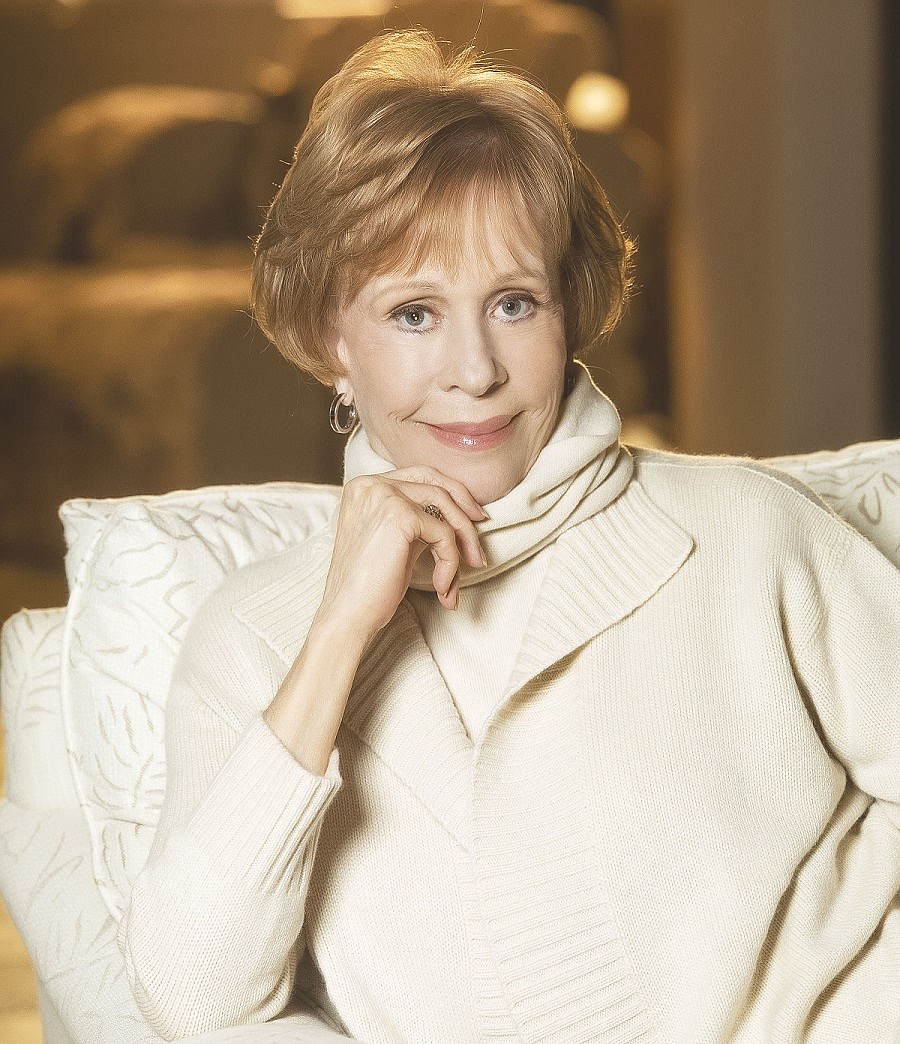
The comedic legend has been busy these past few years. In addition to acting in Palm Royale, which gave Carol Burnett her 2024 Emmy Award nomination, and her work on the television special last year, she also joined Henry Louis Gates, Jr. on PBS's Finding Your Roots to learn about her fascinating ancestry. She appeared in the television series, Mrs. American Pie, and last year finished a recurring role in the poplar show, Better Call Saul. She has also appeared in television or movies pretty much every year since her award-winning television series, The Carol Burnett Show ended in 1978 after an 11-year run.
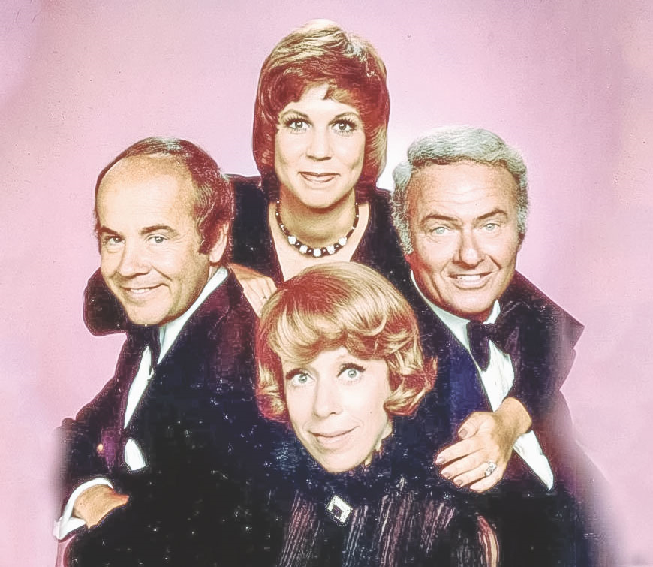 The Carol Burnett Show players (clockwise from left) Tim Conway, Vicki Lawrence, Harvey Korman and Carol Burnett
The Carol Burnett Show players (clockwise from left) Tim Conway, Vicki Lawrence, Harvey Korman and Carol Burnett The show, named by Time and TV Guide as one of the best television shows of all time, was renowned for its zany antics, comedy sketches, movie parodies and Broadway-style musical numbers.
We pick up the article that graced the cover of our October 2018 edition. Here it is, a few paragraphs in…
--------
In December 2017, CBS celebrated the 50th anniversary of the groundbreaking series with a televised special for which Carol, at age 85, received another Emmy nod. It’s a pretty good track record for a show the network didn’t want.
Fans of the long-running program will remember the opening with audience members flinging questions – ANY imaginable question – at the unflappable Carol. Her upcoming one-woman show harkens back to those days. She will show clips from The Carol Burnett Show and offer the audience an unfiltered opportunity to engage her with questions.
“I just come out and basically do what I used to do at the top of my show,” said Carol in an interview with Northwest Prime Time. “We show some of the funniest questions and answers from the show. Up come the lights and off we go.” Carol describes the evening as a conversation with the audience… “Let’s pretend we’re going out to dinner and talk,” she adds.
“I love the spontaneity of these evenings. I never know what anyone is going to ask or say or do. It keeps the old gray matter ticking because I have to be on my toes!”
How did the Q&A openers from The Carol Burnett Show get started? Instead of having a comedian warm up the audience, the producers wanted Carol to come out and talk. She was nervous because, believe it or not, it’s not her nature to call attention to herself. She preferred to hide behind a character (“Give me a wig and black out my teeth”) or do physical comedy— “falling down, jumping out of windows, getting pies in the face.” But the producers wanted the audience to get to know the real her. “It just took off,” recalls Carol.
One of her most embarrassing questions was, “Whether or not I’d had a sex change.” There were frequent requests for Carol’s famous Tarzan yell and people wanting to know about all the cracking-up on set between Tim Conway and Harvey Korman (“Conway’s goal in life was to destroy Harvey, break him up during sketches,” said Carol). Her costumes and the movie spoofs – such as the show’s version of Gone with the Wind when Carol comes down the stairs in the dress she’s made from drapes with the curtain rod still attached – are also favorite topics.
Carol’s artistic genius has long been lauded; she has been called one of the most significant and beloved figures in TV history, but you would never know it in conversation. She remains gracious, warm, down-to-earth and very appreciative of her fans.
It’s hard to believe that she wasn’t the most popular girl in school growing up.
“I was quiet,” says Carol. After her career took off, she would get letters from some of her schoolmates asking, “Is that really you?” They couldn’t believe the talented, madcap character they saw on TV was the same quiet Carol from Hollywood High.
The Early Days
The story of Carol’s childhood and break into show business is so colorful and unlikely it reads like a rags-to-riches Hollywood fable. In fact, Carol Burnett’s autobiography of that period, One More Time, was adapted into a Broadway play by Carol and her daughter, Carrie Hamilton. Sadly, Carrie passed away from cancer before her work reached the stage, but Carol persisted with the project as a tribute to her daughter.
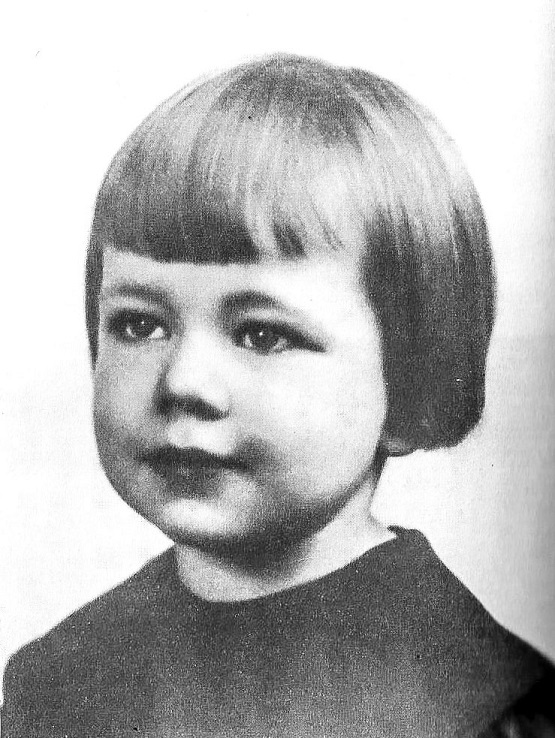 Carol at around age 3
Carol at around age 3
Carol, who was raised by her grandmother, admits that her childhood was rough, “but I knew I was loved.” Her father was an alcoholic and couldn’t hold a job. Her mother, who later also turned to alcohol, had failed in her dreams of becoming a journalist and interviewing movie stars.
Carol explained the situation in an interview with Terry Gross on the radio program, Fresh Air.
“My folks, my parents came to Hollywood from Texas and left me there with my grandmother.” They intended to send for Carol but wanted to strike it big first. Instead, they divorced. “And so, my grandmother and I followed my mother out to Hollywood in 1940. Mama lived in an apartment building one block north of Hollywood Boulevard, but really a million miles away from Hollywood… She got us a single room which faced the lobby of the building. Mama was down the hall. Nanny – that was my grandmother – and I lived in this one room. But the doors were always open. And Mama was in our place as much as we were down the hall with her.”
Carol would share that small studio with her grandmother until after she finished college. Her single mother, who had a baby when Carol was 11, lived with Carol’s half-sister Chrissy in their own small studio down the hall. (Carol would later take her sister with her to live in New York). The entire family was poor enough to rely on relief and charity. Life was tough, but Carol can still dish up funny memories of those days. She credits her grandmother with helping her to look at the sunny side of life.
A frugal lifestyle was second nature to Carol. She had to break in her one pair of shoes each year by walking on newspapers spread across the room to make sure they fit. If they didn’t, they could be exchanged because the soles still looked new. Carol bought her first pair of shoes that actually fit (7½AA) when she got a job on The Garry Moore Show in 1959. They fit her to a T, but she still spread out the newspaper and walked back and forth for two days just to make sure!
Carol’s childhood was filled with music and movies. She remembers singing around the kitchen table (a card table) with her bickering mother and grandmother who both claimed they had enough talent that they should have been stars. And then there were the movies.
“My grandmother would save up enough money because way back then (the 40s), before I turned 12, it was 11 cents for me to go to the movies and it was a quarter for my grandmother. We would see – on average – eight movies a week.” The movies Carol watched with her grandmother later turned up in The Carol Burnett Show’s movie spoofs: “Oh yes,” said Carol. She remembers when they did Gilda. “I got a telegram from Rita Hayworth…she came on our show. Betty Grable was a guest. Lana Turner was a guest on our show and Gloria Swanson. It was just such a thrill, you know. And I thought, oh my God, if Nanny were alive and saw me doing a number with Betty Grable, it would kill her. She would just faint dead away…never in a million years did we ever dream that we’d ever know these people.”
It was for that same grandmother that Carol developed her famed “ear tug”—she couldn’t say hi from a live television show, but she could signal “Hello, I love you” by tugging her ear. That earlobe is measurably longer than the other.
Growing up, Carol spent a lot of time with her cousin Janice. The two would reenact movies scenes, including Tarzan. Carol had perfected the Tarzan yell that accompanied her through life while still a young girl. “My Johnny Weissmuller was, hands down, the best,” wrote Carol in her memoir, One More Time. She could also throw her hips out of their sockets and was able to get attention by performing her tricks at recess.
But by the time she got to Hollywood High School, she didn’t know how to fit in and she was miserable (“I weighed two pounds and was seven feet four inches,” wrote Carol about how awkward she felt during that time). Still, she had her best friend Ilomay, then boys started to show up and, somehow, she began to thrive. At her mother’s urging, Carol signed up for the school newspaper and got her own column. After graduation, she wanted to go to nearby UCLA. The only problem was how to pay for it.
Lucky Breaks
One of the many lucky breaks in Carol’s life came just before the seemingly impossible $42 tuition to UCLA was due, when she received an unnamed donation in the form of a $50 bill tucked into an envelope…her ticket to UCLA. She intended to major in journalism, but the school didn’t carry it. Instead, she opted for Theater Arts English, which offered courses in writing. Problem solved. The program required that she take one acting class, which was perfect because, deep down – although she wouldn’t admit it to anyone – Carol wanted to be an actress.
During her performance in a comedy piece, the class laughed. “Lord, it was a good feeling being up here and enjoying myself,” wrote Carol. She started trying out for roles at school, and finally snagged a small part. At one point the audience started screaming, clapping and stomping its feet for Carol. She received a rave review in the college newspaper; the theater department voted her the most promising newcomer ... the course of her life was set.
After being invited to summer stock, Carol returned to UCLA and met her future husband, Don Saroyan, a fellow theater major. The two teamed up and started performing at charity functions around town. Dreams of Broadway soon emerged.
Fate stepped in again when Carol and some classmates were invited to perform as the entertainment at a fancy party. By evening’s end, Carol was stowing cookies into her purse to take home to her sister and grandmother when she turned to find a party guest looking at her. He was so impressed with Carol that he offered to lend her a thousand dollars to get her start in New York. He made her promise to pay him back in five years, to never reveal his name, and—after she’d succeeded—to help others achieve their dreams. It’s a promise Carol keeps to this day.
New York wasn’t easy. She went on endless auditions, but it was the same old story: without an agent she couldn’t get cast. Without being cast, she couldn’t get an agent.
Just like in the Mickey Rooney and Judy Garland movies, Carol convinced her friends that they could mount their own shoe-string production to impress the agents. The crazy idea turned into a great success: Carol got her agent and was on her way to fame.
After several small jobs with big impact, including an appearance on the Ed Sullivan Show, Carol describes two major breaks in her book, In Such Good Company. “My stage break came in the spring of 1959, when I was cast as Winnifred the Woebegone in the musical comedy Once Upon a Mattress.” What started as a limited-run production proved so popular that it moved to Broadway and ran for over a year.
“My second big break came in the fall of 1959 when I was asked to be a regular performer on The Garry Moore Show, a terrifically popular TV comedy-variety series. For almost a year, I doubled up and did both shows…Garry’s show allowed me to be different characters every week, as opposed to doing one role over and over again in the theater. In essence we mounted a distinct musical comedy revue every week in front of a live studio audience…”
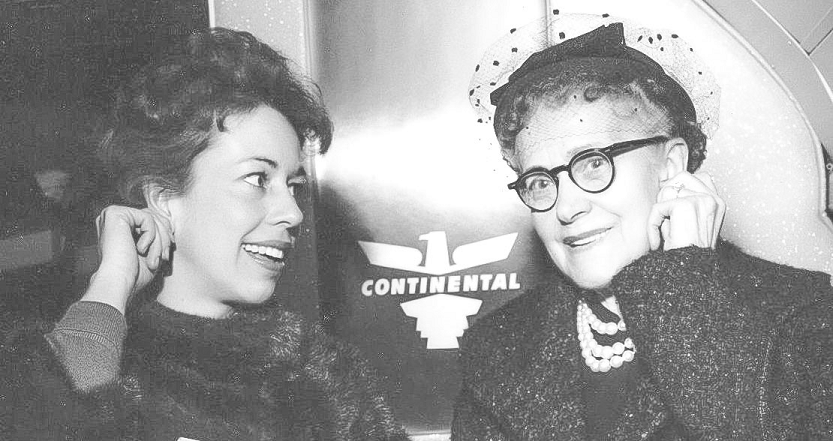 Carol was raised by her “Nanny” (her grandmother, Mae White). Carol's “ear-tug” was her signal to Nanny, “Hello, I love you”
Carol was raised by her “Nanny” (her grandmother, Mae White). Carol's “ear-tug” was her signal to Nanny, “Hello, I love you”
CBS recognized Carol’s great talent and her universal appeal and asked her to sign a 10-year contract – which included an annual TV special and guest appearances. An add-on part of the contract was a stipulation that offered 30 one-hour variety shows of her own, guaranteed. It was her option to “push the button” and make it a go. Instead, Carol focused her energy on Broadway.
“By 1966 I had married Joe Hamilton, who had produced Garry’s show,” writes Carol. They began their family (which eventually included three daughters: Carrie, Jody and Erin). Carol’s Broadway career had not panned out, and they were sitting around their new Beverly Hills home figuring out how to earn some money. They remembered the option for a variety show and decided to “push the button” at the very last minute of the contract. CBS executives tried to talk her out of it, “Variety shows are typically hosted by men…it’s really not for a gal,” she was told. They offered her a sit-com instead.
“But comedy-variety is what I do best!” insisted Carol. Comedy sketches, a rep company, guest stars, music! The Carol Burnett Show was born. Her players consisted of Lyle Waggoner, Vicki Lawrence, Harvey Korman and, eventually, Tim Conway. It featured a 28-piece orchestra, 12 dancers, two guest stars a week and the costume designs of the amazing Bob Mackie. She estimates he designed at least 17,000 costumes over the course of 11 years, from beautiful gowns to sight-gag pieces.
Carol had a fairly normal schedule with her kids during this time: taking them to school, family dinners at home. “It was THE perfect schedule,” writes Carol. She also writes of other “normal” activities such as getting together with friends to play Charades. Except their hosts were Betty White and Allen Ludden, and other guests might include luminaries like Fred Astaire (“He was as good a game player as he was a dancer,” confides Carol).
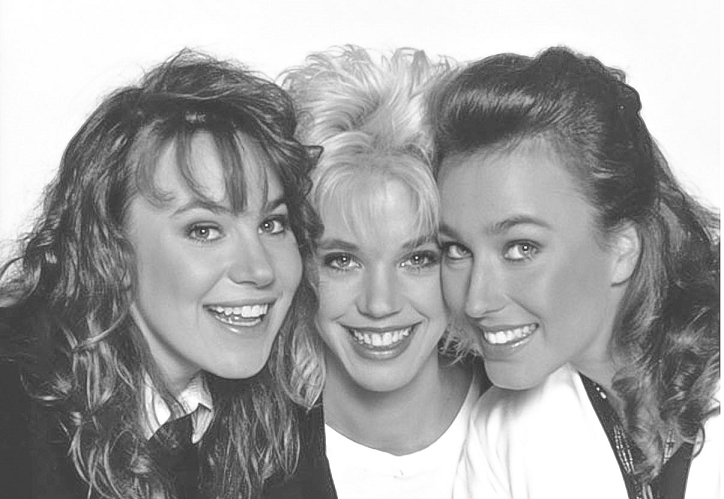 Jody, Carrie and Erin in their younger years
Jody, Carrie and Erin in their younger years
The Carol Burnett Show has earned its place in television history. It is still in syndication and available on DVD. The show remains popular, even with new generations of fans who might discover it through YouTube. After 50 years, the show holds up brilliantly.
“We weren’t timely, but the comedy was timeless,” says Carol. “I’m a clown, and we just wanted to have belly laughs. I think that’s why it’s viable today… Funny is funny.” Carol remains busy with her traveling show. She also has a new talk show on Netflix, A Little Help With Carol Burnett, where she interviews kids about helping adults. Carol likes to make time for her child fans and encourages the young ones to include their phone number when asking for advice about show biz. “If they put their phone number in, I’ll call them.”
Carol lives in Santa Barbara with her husband, Brian Miller. “We love it here so much. We have a lot of friends up here to socialize.” Carol relaxes each morning with two crossword puzzles. They share the house with a beloved Bengal cat.
Carol eats well and remains active, but she attributes her good health to doing what she loves. “I’m active with my career, so I’m fortunate. But if I didn’t have that, I’d still be active – volunteering, involved with the community.”
And laughter is the best medicine, she says. “Get out some good old funny movies. Laughter has saved a lot of lives. I know it saved mine.”
Is there anything left on her bucket list? “It won’t happen unless there is more than one life, but I’d like to go to the moon…I’m not kidding! I’d love to stand on the moon’s surface and look back at earth.”
Maybe Carol will get her wish. Her talent and accomplishments are already out of this world.





